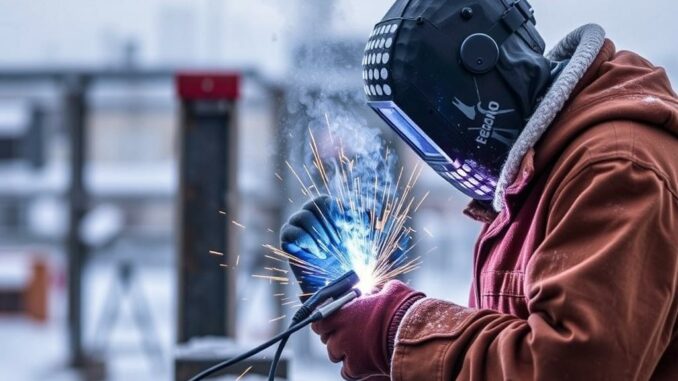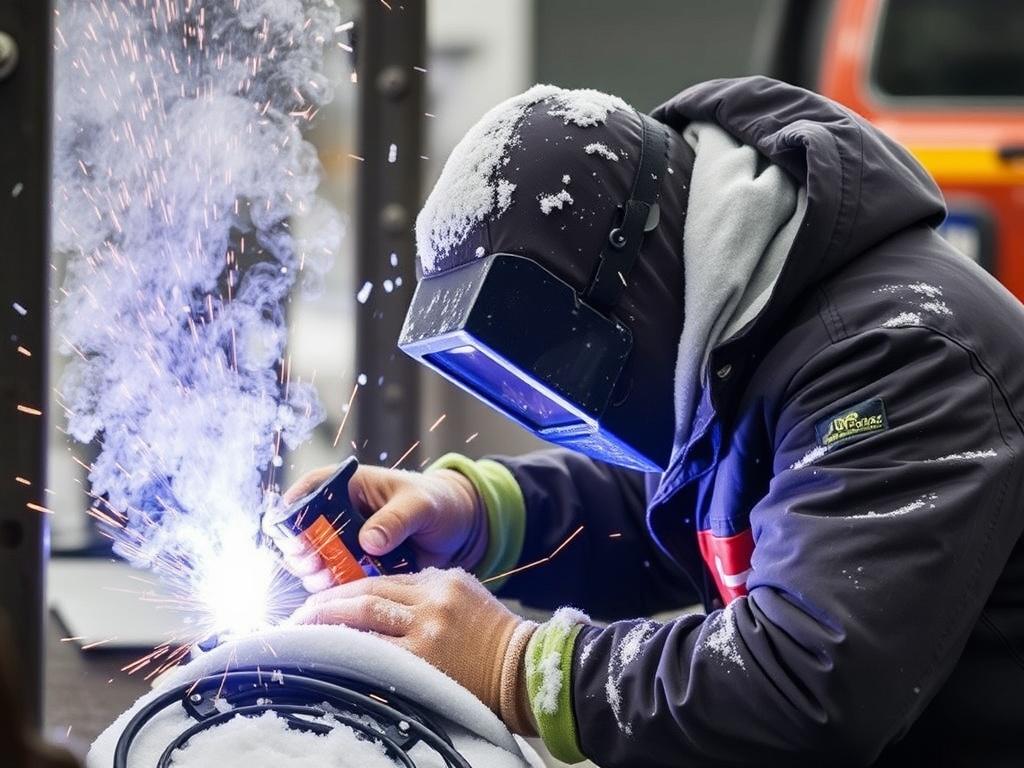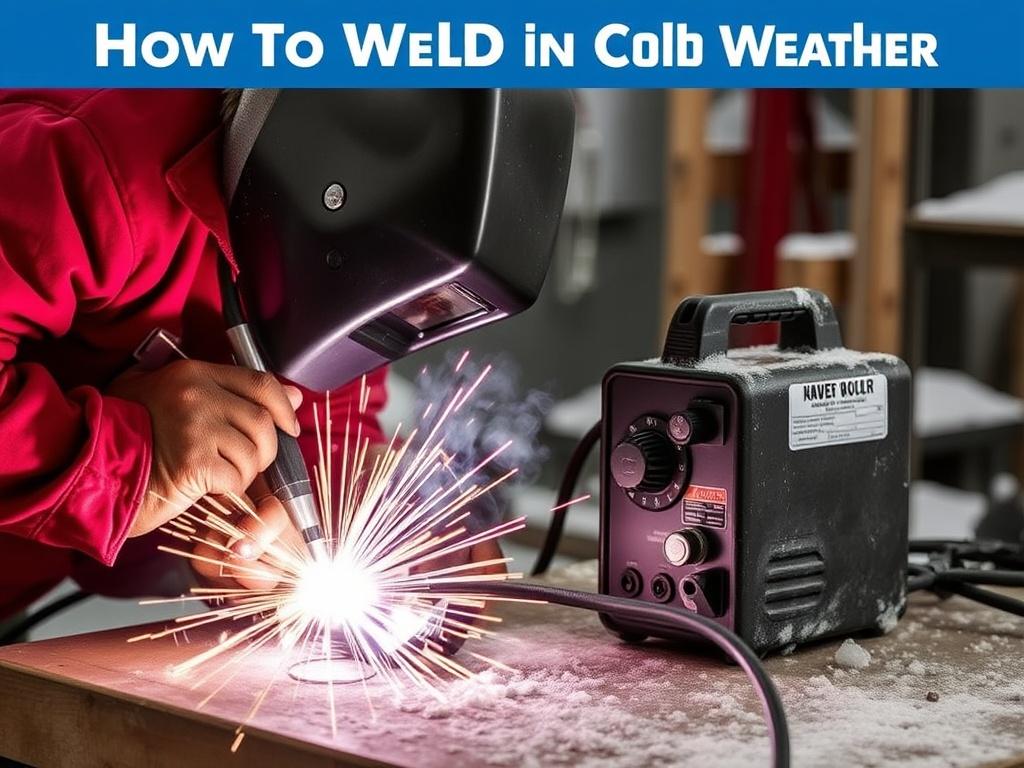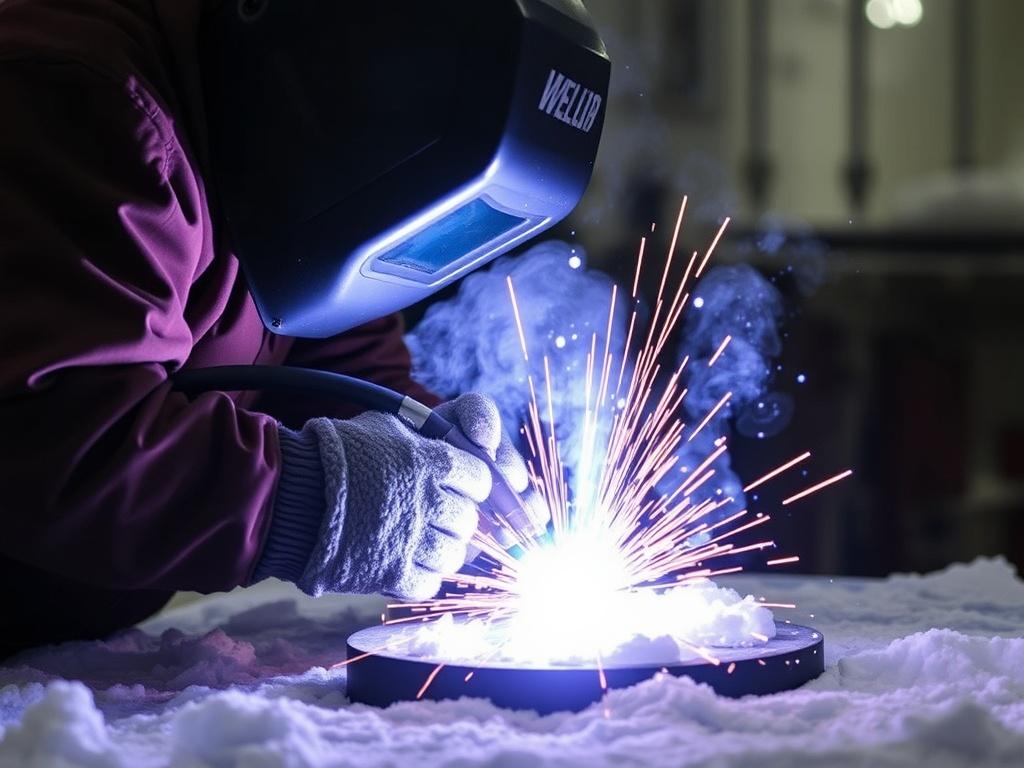
Welding is a skill that requires precision, patience, and the right set of conditions to ensure quality results. While welding in a controlled environment indoors is fairly straightforward, welding outdoors in cold weather brings a whole new set of challenges. Cold temperatures can affect everything from the weld quality to the safety of the welder themselves. Whether you’re a professional welder or a passionate hobbyist, understanding how to weld in cold weather is crucial to getting strong, reliable welds no matter the temperature outside.
In this comprehensive article, we will cover all the important aspects of cold weather welding. We will explore how cold weather affects the welding process, what adjustments you need to make, and practical tips and techniques to keep your welds solid when the mercury drops. From preparation to execution, and even aftercare, this guide aims to prepare you fully for welding in challenging cold environments.
Understanding the Impact of Cold Weather on Welding

Before jumping into welding itself, it’s important to understand how cold weather influences the welding process. Many factors come into play when you’re welding at low temperatures, including how materials behave, the performance of your welding equipment, and even your own safety.
Materials—primarily metals—become less pliable when exposed to cold. This reduced ductility can lead to increased brittleness and a higher chance of cracking, both during welding and later in service. Additionally, moisture condensation and frost can cause contamination on the metal surface, which significantly impacts the weld quality.
From a welder’s perspective, the cold environment can make handling the equipment more difficult, influencing precision and stamina. Gloves and protective gear are heavier in winter, which might restrict movement. In combination, these factors make cold weather welding uniquely challenging.
How Temperature Affects Metal and Weld Quality
Metal contracts in cold weather, and its microstructure can become more prone to cracking during welding. When the base metal and the weld metal cool too quickly, residual stresses develop. These stresses increase the risk of cold cracking or hydrogen-induced cracking, which can severely weaken the weld.
Temperature gradients between the hot weld zone and the cold surroundings also affect cooling rates. A fast cooling rate can prevent proper fusion, causing weld defects like porosity, incomplete fusion, or cold shuts.
To visualize this, consider the following table:
| Welding Temperature | Effect on Metal | Potential Weld Issues |
|---|---|---|
| Above 50°F (10°C) | Metal is pliable and stable | Low risk of cracking or contamination |
| 32°F to 50°F (0°C to 10°C) | Reduced ductility, increased metal contraction | Moderate risk of cracking, weld defects may occur |
| Below 32°F (0°C) | Highly brittle metal, condensation and frost likely | High risk of cracking, contamination, and poor weld fusion |
Challenges Specific to Cold Weather Welding
- Material Preparation: Frost, ice, and moisture can contaminate the welding surface.
- Preheating Requirements: Cold metal needs to be preheated to avoid rapid cooling.
- Equipment Functionality: Cold temperatures may affect welding machines, consumables, and shielding gases.
- Operator Comfort and Safety: Cold weather impacts the welder’s dexterity, reaction time, and overall comfort.
- Post-Weld Treatment: Slower cooling rates or controlled reheating may be required to prevent cracks.
Understanding these issues forms the foundation for mastering cold weather welding.
Preparation Before Welding in Cold Weather

The success of cold weather welding largely depends on preparation. Your weld quality can only be as good as the conditions you set up before striking your first arc. This section covers everything that needs to be arranged prior to starting welding during cold weather—the right equipment, proper material handling, and safety protocols.
Choosing the Right Welding Equipment and Consumables for Cold Weather
Your equipment selection should match the environmental conditions. Some welding machines behave differently in cold temperatures, and certain consumables are better suited to withstand the challenges of outdoor, cold weather work.
Power Source:
Generators should be rated for cold weather operation since their performance can drop in chilly conditions. Diesel engines may be harder to start in freezing temps, so ensure battery health and fuel are managed well.
Welding Machines:
Transformer-based machines are generally more robust in cold weather than inverter-based ones. However, newer inverters designed for all-weather operation can perform well if kept dry and properly maintained.
Consumables:
The choice of electrodes, welding wire, and shielding gases must be compatible with cold weather conditions to minimize defects:
- Electrodes: Low hydrogen electrodes (e.g., E7018) are preferred for cold weather welding to reduce hydrogen-induced cracking.
- Welding Wire: Ensure the wire is fresh and dry; store inside moisture-proof containers.
- Shielding Gas: Argon and CO2-based mixes are commonly used, but sensitivity to cold affects gas flow and shielding efficiency.
Material Preparation: Cleaning and Preheating
One of the most common causes of poor quality welds in cold weather is contamination from frost, ice, or moisture. Before welding, the base metal must be thoroughly cleaned and dried.
Use wire brushes, grinders, and solvent cleaners to remove rust, oil, and dirt. Then, make sure to remove any moisture by preheating the components to a temperature that evaporates surface frost and prevents quick cooling. Preheating also reduces thermal stress in the metal.
Typical preheating methods include:
- Direct Flame Heating: Propane torches or oxy-acetylene torches used to evenly warm the metal surface.
- Electric Heaters: Induction heaters or heating blankets that provide consistent temperature control.
- Infrared Heaters: Provide localized heating ideal for small parts.
The preheat temperature depends on the metal type and thickness but typically ranges between 100°F to 300°F (38°C to 149°C). Preheat evenly; uneven heating can cause warping or cracking.
Setting Up a Cold Weather Welding Station
When welding outdoors in cold weather, setting up a proper shelter is essential. A windbreak or portable welding tent can protect your workspace and help maintain some heat around the weld zone.
Additional station setup tips:
- Position your workspace to minimize exposure to wind and precipitation.
- Use portable heaters if possible, but ensure they do not interfere with safety.
- Keep consumables close to a heat source to prevent moisture absorption.
- Ensure adequate lighting since shorter daylight hours often coincide with cold temperatures.
- Have safety equipment like gloves, helmets, and protective blankets easily accessible.
Techniques for Welding in Cold Weather

Once your materials and station are ready, you can focus on the critical welding techniques needed to overcome cold weather challenges. Adjusting your standard welding practices to accommodate temperature effects will help maintain weld integrity.
Adjusting Welding Parameters
Standard welding parameters like current, voltage, and travel speed often require tuning when welding in cold weather. Slower travel speeds and slightly higher heat input help counter rapid cooling and improve fusion.
Increase Heat Input: By increasing amperage or voltage modestly (usually 10-15%), the weld pool remains molten longer, allowing better bonding.
Slow Down Travel Speed: Slower travel allows more heat transfer but avoid going too slow to prevent excessive weld bead buildup.
Optimize Electrode Angle: Adjust angles to maintain appropriate weld pool control despite thicker protective gear worn by the welder.
Welding Techniques and Best Practices
Certain welding techniques mitigate cold weather effects better. Here are some reliable tips:
- Use Stringer Beads: Instead of weaving, stringer beads minimize rapid cooling and reduce weld stress.
- Apply Multiple Passes: Layering heat with multiple passes lowers residual stress and improves weld penetration.
- Maintain Proper Arc Length: Shorter arcs reduce chance of contamination from air and moisture.
- Control Electrode Manipulation: Avoid dragging the electrode, which may cause slag inclusion.
Welding Processes Suitable for Cold Weather
While most welding processes can be adapted for cold conditions, some perform better naturally due to equipment and shielding factors:
| Welding Process | Advantages in Cold Weather | Considerations |
|---|---|---|
| SMAW (Stick Welding) | Low hydrogen electrodes reduce cracking risk; portable | Requires preheating; consumables must be kept dry |
| MIG Welding | Fast welding speeds; suitable for thin metals | Shielding gas may be affected by wind; tough to maintain gas coverage outside |
| TIG Welding | Excellent control and precision | Slow process; more challenging in windy, cold environments |
| Flux-Cored Arc Welding (FCAW) | High deposition rates; can weld outdoors | Use high-quality flux wires; avoid moisture contamination |
Post-Weld Procedures and Care in Cold Weather
After the weld is completed, how you care for and treat the weld can determine the overall strength and durability, especially in a cold climate.
Post-Weld Heat Treatment (PWHT)
In cold weather applications, a controlled post-weld heat treatment reduces residual stresses and hydrogen-induced cracking risk. This can be done through slow, uniform heating and cooling of the welded metal according to established schedules suited for the material.
Allowing Proper Cooling Time
Do not expose fresh welds to sudden temperature drops or harsh elements immediately after completion. Use insulated blankets or heating wraps to slow the cooling process where necessary.
Inspection for Weld Defects
Cold weather welding might increase certain defects like porosity or incomplete fusion, so thorough inspection is vital:
- Visual inspection for cracks or slag inclusion
- Non-destructive testing such as ultrasonic testing or radiography
- Check for weld bead consistency and penetration depth
Safety Considerations When Welding in Cold Weather
Safety should always be a priority, and cold weather introduces specific hazards for welders:
- Frostbite and Hypothermia: Prolonged exposure to cold can cause dangerous health issues, so appropriate clothing and regular breaks are essential.
- Slips and Falls: Icy working environments increase risk of accidents.
- Equipment Handling: Cold metals and gear can cause skin burns or injuries if not handled properly.
- Fire Hazards: Be cautious with portable heaters and flame sources near flammable materials, especially in enclosed or poorly ventilated spaces.
Invest in quality cold weather gear, including insulated gloves designed for welding, layered clothing, waterproof boots with good traction, and face protection that prevents fogging and frost buildup.
Conclusion: Mastering Welding in Cold Weather
Cold weather welding requires a mix of preparation, adaptation, and experience. From understanding the physics of metals in cold temperatures to selecting proper equipment and maintaining safety, each step can dramatically influence your final weld quality. By following the strategies and best practices outlined in this article, you will gain confidence and skill to tackle welding projects reliably, even in the harshest winter conditions.
Remember, the key to success lies in preparation—don’t rush your setup and always respect the material and environmental limits. Prioritize safety, apply correct techniques, and approach each weld thoughtfully. With time and practice, cold weather welding will become less intimidating and more routine.
Happy welding—and stay warm!
